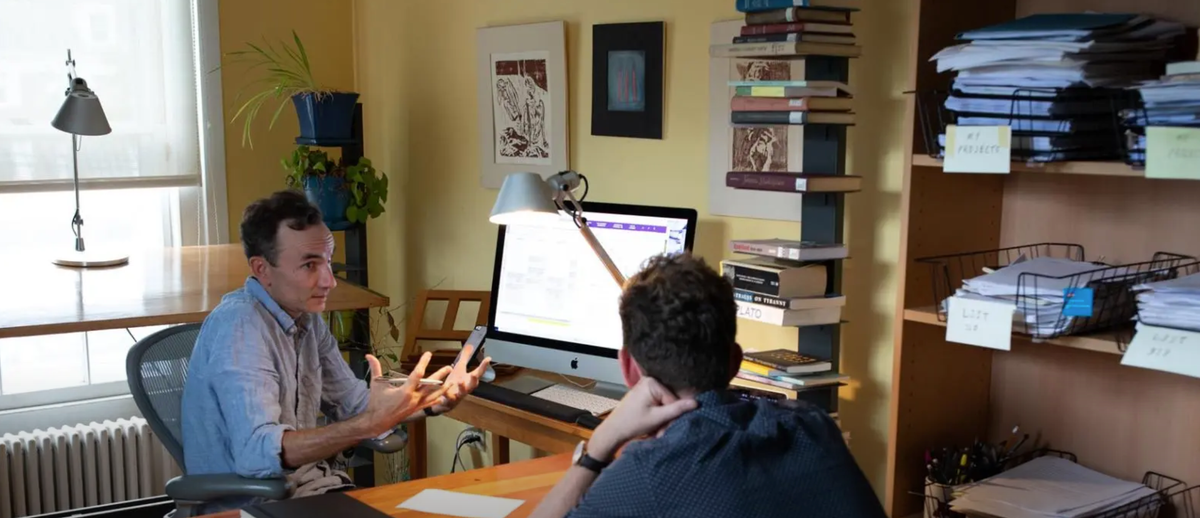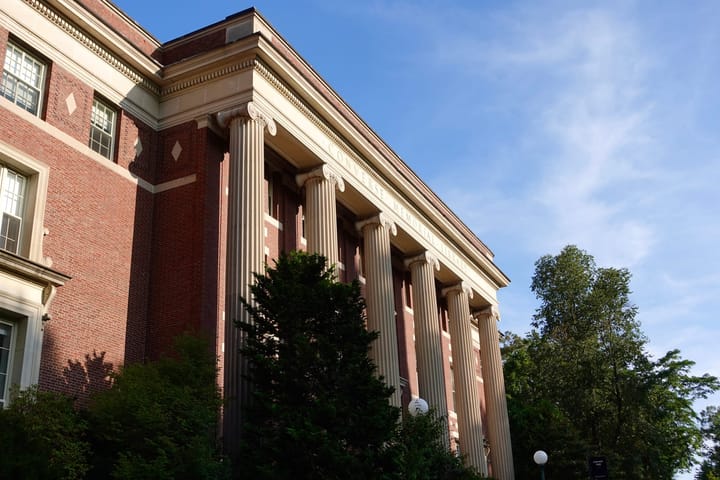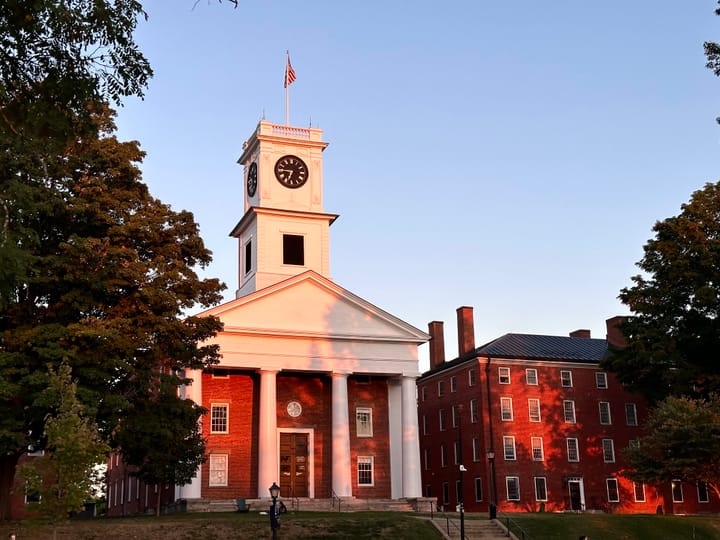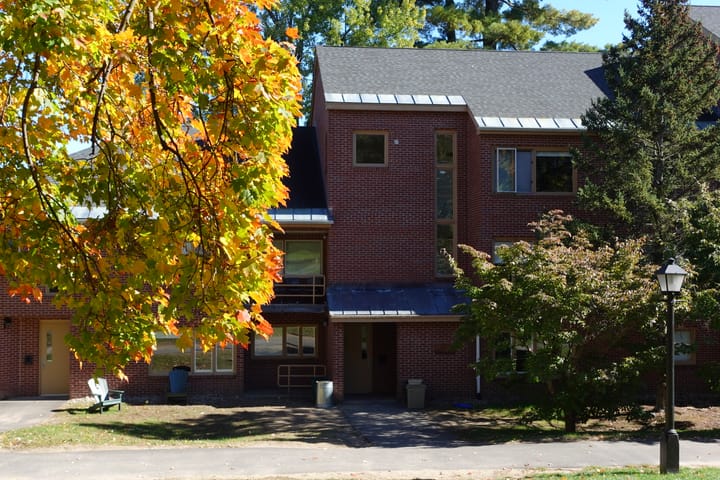New School Year Brings Changes in First-Year Advising
The college adopted a new first-year advising process for the class of 2029, shifting to in-person group meetings held during orientation. Managing News Editors Dylan Vrins ’26 and Anna Wang ’28 spoke to administrators and students about the motivations behind this change and initial reactions.

This fall brought significant changes to first-year advising for the class of 2029. Instead of registering for courses on Zoom prior to arriving on campus, incoming students attended in-person sessions for advising and registration in August as part of the orientation program. This marks a return to the advising system that existed prior to Covid.
Since 2020, first-year registration has taken place over one day with registration support available over Zoom. All first years would meet with their assigned academic advisor beforehand to decide on a class schedule, then they would receive a randomly assigned 15-minute slot to register for courses on registration day. According to Dean of New Students Kiara Vigil, the college decided to shift away from this system due to difficulties arranging meetings across different time zones and technological capacities. The randomized registration appointments also meant that students traveling during their assigned times received less support, in terms of both navigating Workday and academic advising.
“This move was meant to provide all first-year students with a similar and more equitable advising experience,” Vigil said.
This year, incoming freshmen registered for courses through group advising sessions of about 15 people, each guided by two assigned faculty “super” advisors — one in STEM, one in humanities — who offered advice on exploring a liberal arts education and navigating Amherst’s open curriculum. Each group randomly received an hour in the day to attend these sessions, where they then registered for courses while remaining with their “super” advisors. Students were still assigned an academic advisor, and were encouraged to meet individually with them before the add/drop period to revisit their schedules.
Orientation leaders were also trained to support this new system. They were expected to help new students build saved schedules prior to registration day. Orientation Leader Kidane Pincus ’28 recalled that during his training, he was told that the change in advising structure was also due to academic advisors having different levels of experience with advising at Amherst.
“They had people who’ve been here for like 40 years, and people who [were on] their first or second year, so [first years] got a range of advice,” Pincus said. “What they wanted to do instead was to have [first years] rotate through in-person rooms with professors [who] have been here for a while.”
Pincus also said that a significant advantage of the new process is that incoming students were able to discuss their schedules with upperclassmen orientation leaders before registering.
However, since everyone on his squad arrived at their group advising session with set schedules, he felt the two professors’ presentations didn’t change many minds.
“I think that a lot of the kids’ opinions were like, ‘What are we doing here? This isn’t actually helpful to us at all,’” Pincus said.
On the other hand, Orientation Leader Adrian Whitney ’26 shared that when many courses filled up towards the end of the day, those who had to redesign their schedules benefited from having in-person guidance from professors.
“They really wanted to take a lot of special courses that Amherst has to offer with notable professors, but they just didn’t get that option the first semester ... That’s where those professors became instrumental and their advice [came] into play, ” Whitney said.
Both orientation leaders added that students in their squad had a range of experiences with the process. While some people simply clicked a button to register, others stayed behind to build a new schedule from scratch. Pincus remembers someone in his squad who “missed one of [the] afternoon sessions because she spent two or three hours trying to figure out what her courses were going to be.” However, both Pincus and Whitney appreciate the in-person support the new system provides.
“In the previous structure, a lot of kids were having a hard time [during registration] without someone there to actually mentor them,” Whitney said. “I think ... one really good thing about this [structure] is that every student did have personalized attention in person to actually get their classes in a schedule before they registered.”
First-year students’ responses to the advising process, however, were mostly negative. “The process, to me, felt pretty rushed, somewhat asynchronous, [and] without the amount of support one might expect from a school like Amherst,” Mayen Thorsen ’29 said.
Although freshmen were sent information about the date they would be registering for classes and orientation leaders were instructed to check in with their groups, many freshmen arrived at the time of their registration without a saved schedule and then felt insecure in their choices. Amir Ali ’29 described how, during the add/drop period, many first-years dropped all three classes they had originally registered for, except for their required First-Year Seminar.
Some first-years also expressed dissatisfaction with the faculty “super” advisors. “They were supposed to walk us through [course registration], [but] … when it came time to actually submit our courses, no one in my group knew how to do it,” Ali said. Ali also reported in his experience that “super” advisors spent most of the time talking about the open curriculum and outlining the diversity of departments and courses. As a student interested in the pre-med track, he felt it was unhelpful to have advisors who only gave general advice rather than specific advice about courses. Whereas in previous years, individual academic advisors could provide this kind of advice prior to registration, communication between some freshmen and their individual academic advisor before and after course registration has been limited this year. As of early October, Ali reported that he and many first-years he knows of have not met with their advisor at all. In some cases, according to Ali, these advisors haven’t reached out. Additionally, because course registration took place within orientation groups based on students’ First Year Seminars — many students shared similar academic interests and ended up competing for the same classes.
Both Thorsen and Ali felt the whole process could have been split across multiple days and should have been done earlier to allow more time dedicated to course registration. “I think that the saved schedule process should have been on its own separate day, so that there could have been time allocated on another day for one-on-one meetings about course selections with students’ individual advisors,” Thorsen said. Vigil said the feedback she heard from students was mostly positive, but acknowledged that there can always be improvements. She also hopes that through the advising process, new students could branch out and fully take advantage of Amherst’s plenty of opportunities.
“I don’t think advising can fix everything that we might need to ‘fix’ at Amherst when it comes to helping students really see and appreciate our open curriculum,” Vigil said. “But I am happy to talk with anyone about how to use advising in the best possible way for our students. I would love to see more of them taking intellectual risks — trying a new foreign language, for instance, when they start college — or taking a class in a department or subject that they had never heard of before.”





Comments ()